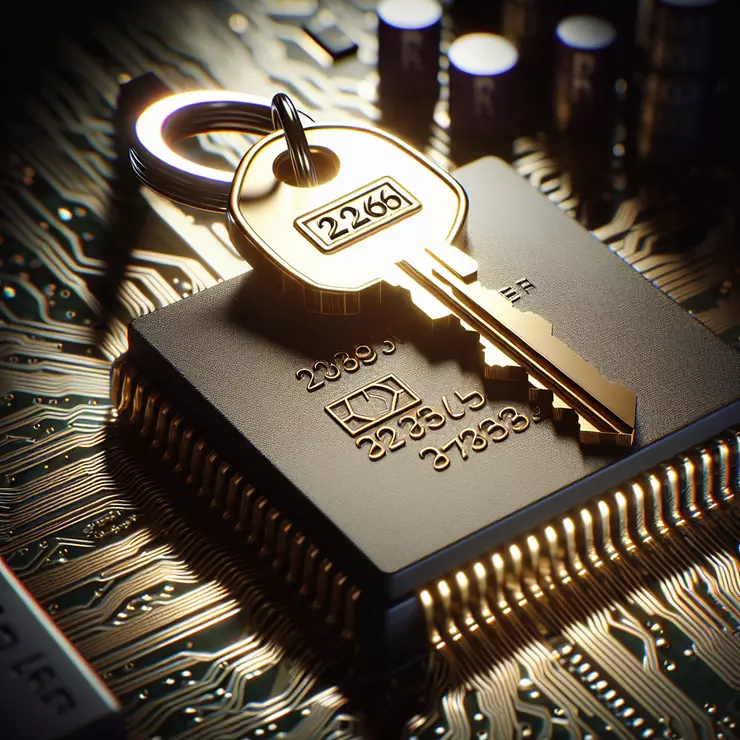As we navigate the intricate landscape of cybersecurity, a question reverberates within the corridors of technology: what are the best encryption algorithms in 2025? This query is not merely academic; it poses a genuine challenge to individuals and organizations striving to secure their data. With the growing sophistication of cyber threats, the quest for effective encryption methods is more pressing than ever.
The digital age has wrought an exponential increase in the volume and sensitivity of information traversing the web. As a result, encryption—the process of transforming readable data into an unreadable format—serves as a crucial deterrent against unauthorized access. Various algorithms have emerged, each with distinct features, strengths, and weaknesses.
Understanding the landscape begins with a look at symmetric encryption. AES (Advanced Encryption Standard) stands tall as the preeminent choice. Renowned for its robustness and efficiency, AES employs block cipher encryption with key sizes of 128, 192, or 256 bits. In 2025, it remains indispensable for a multitude of applications, from securing files on your hard drive to encrypting communications on the internet. But why does AES stand out amidst a sea of alternatives? Its resilience against known cryptographic attacks and its speed of execution are compelling propositions.
However, it is essential to consider the limitations of symmetric encryption. The necessity of sharing the encryption key poses a significant challenge. If the key is intercepted or leaked, unauthorized parties may decrypt the sensitive data. Thus, organizations must adopt secure key management practices, a task that can prove daunting.
Conversely, asymmetric encryption, epitomized by RSA (Rivest-Shamir-Adleman), offers a potentially superior solution to the key exchange dilemma. RSA utilizes a pair of keys: a public key for encryption and a private key for decryption. This method fosters secure exchanges without the need to share secret information, yet it comes at a cost. RSA is undoubtedly slower than its symmetric counterpart, especially with larger key sizes, which can impact performance during heavy computational tasks.
The evolution of symmetric and asymmetric algorithms paved the way for hybrid systems, melding the strengths of both methods. Hybrid encryption, commonly employed today, utilizes symmetric encryption for bulk data processing while leveraging asymmetric encryption for secure key exchange. The interplay between these two approaches is crucial for protecting data in transit—such as during online transactions or secure messaging.
As we delve deeper into the realm of encryption algorithms, an emerging contender demands attention: Quantum Cryptography. Quantum computing poses a potential threat to classical encryption methods, raising profound questions about future security. In 2025, quantum-resistant algorithms such as Lattice-based cryptography are being developed and standardized to withstand the computational prowess of quantum systems. This innovative approach transforms the very nature of secure communications, redefining what it means to encrypt data.
As encryption technology evolves, vigilance becomes paramount. While AES and RSA may currently reign supreme, the horizon is laden with uncertainty, especially with the burgeoning field of quantum computing. In light of these advancements, it raises an intriguing question: Are organizations ready to transition to quantum-safe algorithms before the technology matures to a level where conventional encryption can no longer protect sensitive information? The answer will depend on the foresight and adaptability of security professionals worldwide.
Yet, the encryption landscape is not merely characterized by algorithms; it is also shaped by the environment in which they operate. The proliferation of Internet of Things (IoT) devices presents unique challenges. Devices ranging from smart thermostats to industrial control systems are becoming essential participants in daily life. The encryption algorithms used in IoT applications must balance resource constraints with security requirements. Lightweight encryption protocols, such as TinyAES or ChaCha20, are being optimized for such environments. The quest for efficiency and security in the IoT sphere is a delicate balancing act that requires innovative solutions.
As we reflect on the encryption choices of 2025, one cannot overlook the increasing adoption of blockchain technology. Known primarily for underpinning cryptocurrencies, blockchain offers unique advantages for secure data storage and transmission. The cryptographic hashing methods employed in blockchain systems, such as SHA-256 (Secure Hash Algorithm), are foundational to its integrity. However, the decentralization aspect of blockchain does not eliminate the need for encryption; rather, it adds an additional layer of complexity. Organizations are challenged to effectively integrate traditional encryption with blockchain solutions to secure data at rest and in transit.
In conclusion, the question “What are the best encryption algorithms in 2025?” illuminates a pivotal challenge confronting the digital world. With established stalwarts like AES and RSA holding their ground, newer paradigms including quantum-resistant algorithms, lightweight solutions for IoT, and blockchain encryption techniques coexist in this dynamic ecosystem. As we stride into the future, vigilance, innovation, and adaptability will define our capacity to secure information in an increasingly interconnected and vulnerable environment. The challenge lies not only in choosing the right algorithms but also in anticipating the next wave of technological change that could redefine the rules of engagement in the battle for data security.








Leave a Comment